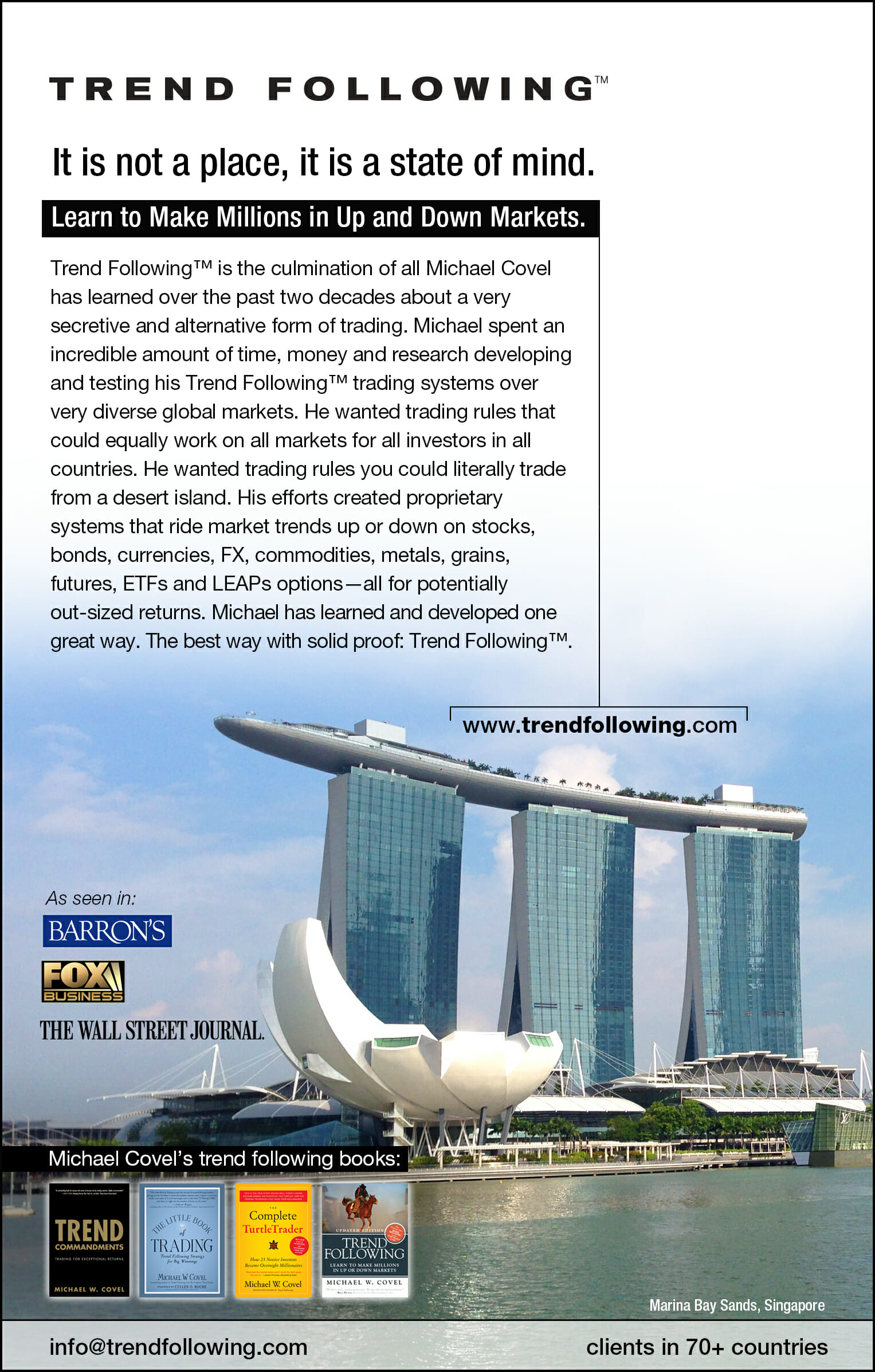Sometimes trend following logic sounds so simple, but then again how many will really work (and be patient) for the big profits?
Amos Hostetter: Trading Dont’s
- Don’t sacrifice your position for fluctuations.
- Don’t expect the market to end in a blaze of glory. Look out for warnings.
- Don’t expect the tape to be a lecturer. It’s enough to see that something is wrong.
- Never try to sell at the top. It isn’t wise. Sell after a reaction if there is no rally.
- Don’t imagine that a market that has once sold at 150 must be cheap at 130.
- Don’t buck the market trend.
- Don’t look for the breaks. Look out for warnings.
- Don’t try to make an average from a losing game.
- Never keep goods that show a loss, and sell those that show a profit. Get out with the least loss, and sit tight for greater profits.
Amos Hostetter: Dangers in Trading caused by Human Nature
- Fear: fearful of profit and one acts too soon.
- Hope: hope for a change in the forces against one.
- Lack of confidence in ones own judgment.
- Never cease to do your own thinking.
- A man must not swear eternal allegiance to either the bear or bull side.
- The individual fails to stick to facts!
- People believe what it pleases them to believe.
More Guidelines
- Trend following is not anticipatory. Does the 60% drop in NASDAQ stocks mean the bull market has finally run its course? Who knows. Don’t worry about what the markets are going to do, worry about what you are going to do in response to the markets today. You can’t undo the past and you can’t predict the future. No one can consistently predict anything. Prices, not investors, predict the future.
- Meticulous risk management strategies are absolutely crucial. Everyone makes money in a bull, but if you don’t have a money management plan and an exit plan, you are in trouble when the bull is replaced by the bear. Trend followers plan when they will get out before they ever get in. They are interested in one variable: price. They forget forecasts, fundamental factors, and technological break throughs.
- Successful trading systems adapt to change. Inefficiencies in a variety of financial markets around the world lead to sustained trends. Mechanical trading systems exploit these trends for profits. With global markets in various stages of expansion, retraction and equilibrium, your trading strategy adapts.
- Know every day what your portfolio is worth. Calculate what your risks are on any given day for all positions.
- Controlling risk is not the same thing as avoiding risk. If managing risk is an integral part of your philosophy, when your risk level goes up or down, you simply adjust.
- Manage your risk. Position liquidations are triggered by significant adverse price action and are never pre-determined objectives. Concentrate on managing the risk. The returns will take care of themselves.
- Large profits engender larger size ? Thin profits engender cutting back. If you are flush with profits, you trade larger size. If you are thinly capitalized, you have to cut back.
- Equalize risk. Allocate a fixed dollar amount of risk to each new position. For example: a corn position will have the same initial dollar risk as a T-Bond position. By trading a system with the same parameters across the board you protect yourself from curve-fitting.
- Enter and exist with rules. You can’t expect to enter a market at the precise moment a bottom is hit, nor will you exit a market at the exact top. Capture the middle of the trend.
- Seek profit opportunities in trending markets whether those markets are moving up or down.
- Obtain profits from long-term volatility. View volatility as a cornerstone of your trading system. Volatility is the root of profit.
- Do not attempt to buy lows and sell highs. Buy market strength (highs) and sell market weakness (lows).
“Trends always go further than rational people expect, or even imagine. Most investors don’t have the stomach for extended rallies or declines. The philosophy of not having a predetermined profit objective allows us to continue with a trend for its full duration and then some. We try very hard to avoid the pitfalls of liquidating a trade too early, even at the cost of giving back large profits…Trends exist and they endure for a specified time, longer than most imagine. In a very uncertain world, perhaps nothing makes more sense than simply following trends.”
John W. Henry
Trend Following Products
Review trend following systems and training:

More info here.
